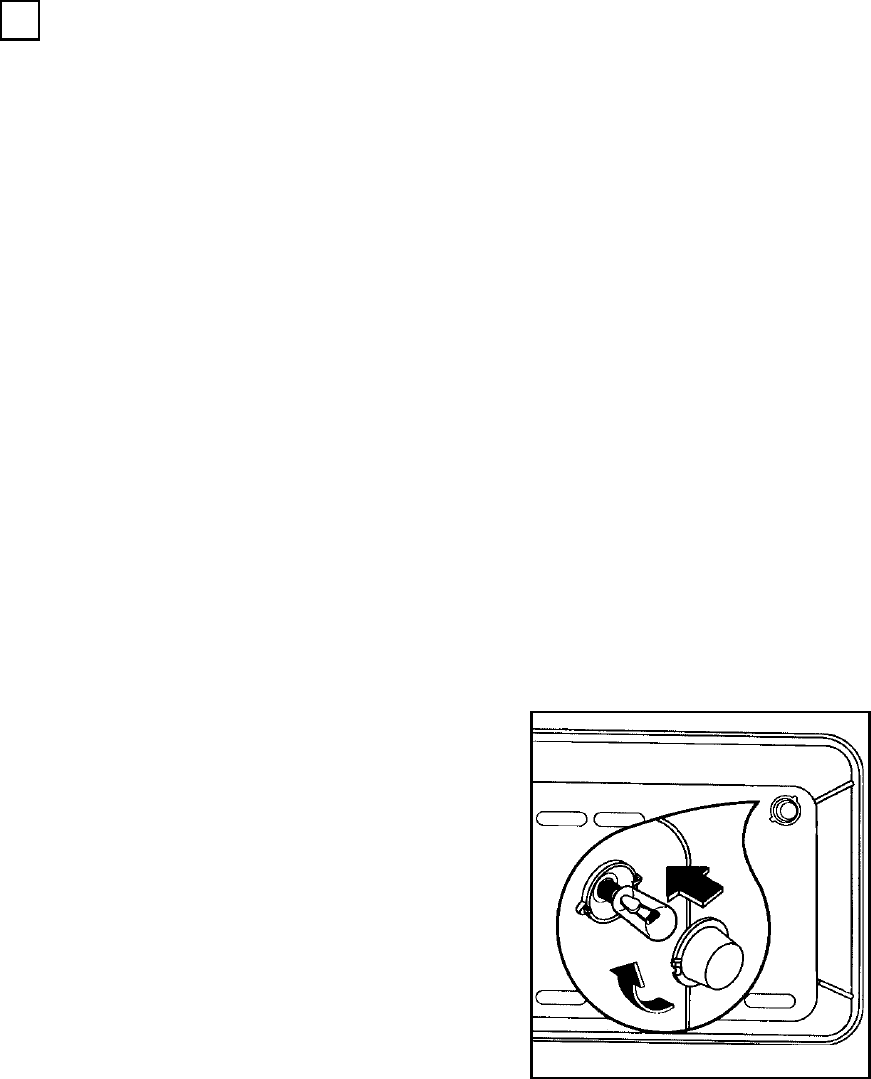
24
Care of catalytic liners
(Main Oven only)
Catalytic liners destroy splashes of food and fats
when the oven temperature is raised to around 220°C.
To aid this process it is a good idea to run the oven
for an hour or two per week, without food, to ensure
continued good performance from the Catalytic
liners.
• Manual cleaning of the Catalytic liner is not
recommended. Damage will occur if soap
impregnated steel wool pads, aerosol cleaners and
any other abrasives are used.
• Slight discoloration and polishing of the Catalytic
surface may occur in time. This does not affect the
Catalytic properties in any way.
• Follow the recommendations below to keep oven
soilage to a minimum.
Hints and Tips
i
COOKING TO REDUCE SOILAGE
Cook at the recommended temperatures. Higher
temperatures during roasting will increase soilage.
Try cooking to lower temperatures for an increased
length of time, you will save energy and often the
joint is more tender.
Use minimal, if any, extra oil or fat when roasting
meat; potatoes only require brushing with fat before
cooking. Extra fat in the oven during roasting will
increase splashing and soilage.
It is NOT necessary to add water to the meat tin
when roasting. The water and the fat juices from the
joint create excessive splattering during cooking,
even at normal temperatures, as well as causing
condensation.
Covering joints during cooking will also prevent
splashing onto the interior surfaces; removing the
covering for the last 20-30 minutes will allow extra
browning, if required. Some large joints and turkeys
especially benefit by this method of cooking,
allowing the joint to cook through before the outside
is overbrowned.
Do use the roasting tin. During roasting, the fat from
the joint will be contained beneath the trivet and
therefore prevent it from splattering onto the
'Catalytic' liner.
Replacing the Oven Light
FO 0287
If the oven bulb needs replacing, it must comply with
the following specifications:
- Electric power: 15W,
- Electric rate: 230-240 V (50 Hz),
- Resistant to temperatures of 300°C,
- Connection type: E14.
These bulbs are available from your local Zanussi
Force Service Centre.
To replace the faulty bulb:
1. Ensure the oven is isolated from the electrical
supply.
2. Turn the glass cover anticlockwise.
3. Remove the faulty bulb and replace with the
new one.
4. Refit the glass cover.
5. Restore the electrical supply.
☞


















